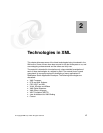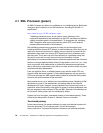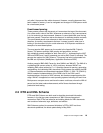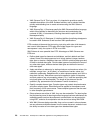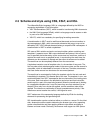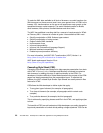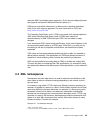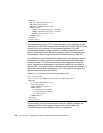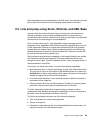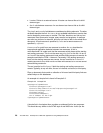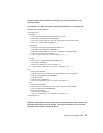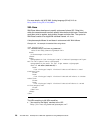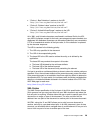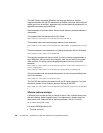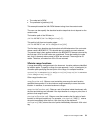
24 The XML Files: Development of XML/XSL Applications Using WebSphere Studio
<bk:book>
<bk:title>XML Sample</bk:title>
<bk:pages>210</bk:pages>
<bk:isbn>1-868640-34-2</bk:isbn>
<authr:author>
<authr:firstname>John</authr:firstname>
<authr:lastname>Smith</authr:lastname>
<authr:title>Mr</authr:title>
</authr:author>
</bk:book>
</library-entry>
In the example above, the <TITLE> tag is used twice, but in a different context,
once within the <AUTHOR> element and once within the <BOOK> element. Note
the use of the
xmlns keyword in the namespace declaration. The XML
recommendation does not specify whether a namespace declaration should
point to a valid URI (Uniform Resource Identifier), only that it should be unique
and persistent. There is not guarantee that the URI will point to a valid URI.
In the example, in order to illustrate the relationship of each element to a given
namespace, we chose to specify the relevant namespace prefix before each
element. However, it is assumed that once a prefix is applied to an element
name, it applies to all descendants of that element unless it is over-ridden by
another prefix. The extent to which a namespace prefix applies to elements in a
document is defined as the namespace
scope. If we were to use scoping, the
above example would then look like this.
Example 2-2 A namespace example using namespace prefix
<?xml version”1.0”?>
<library-entry xmlns:authr=”authors.dtd” xmlns:bk=”books.dtd”>
<bk:book>
<title>XML & WebSphere</title>
<pages>210</pages>
<isbn>1-868640-34-2</isbn>
<authr:author>
<firstname>Joe</firstname>
<lastname>Bloggs</lastname>
<title>Mr</title>
</authr:author>
</bk:book>
</library-entry>
In this example, it is clear that all elements within the <BOOK> element are
associated with the
bk namespace, except for the elements within the
<AUTHOR> element which belong to the
authr namespace.




